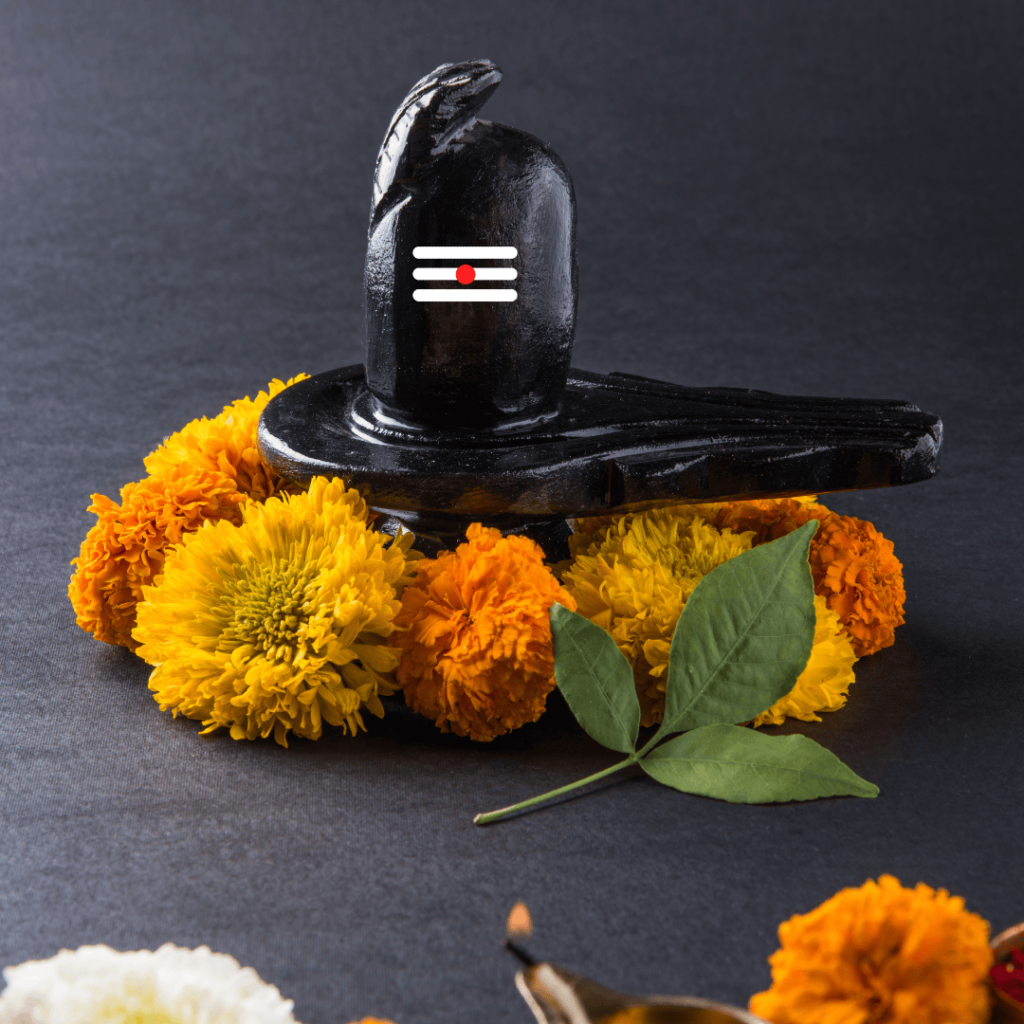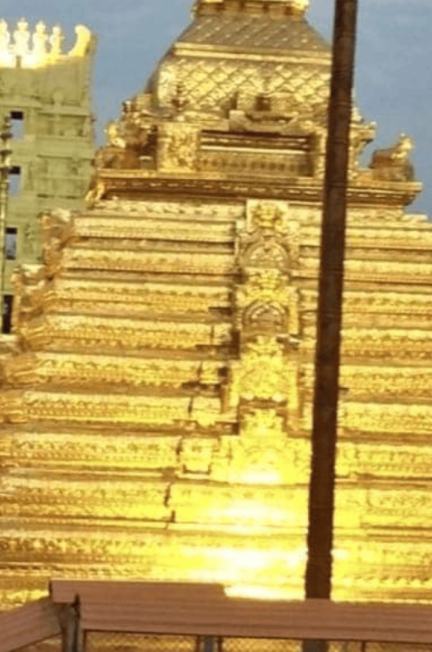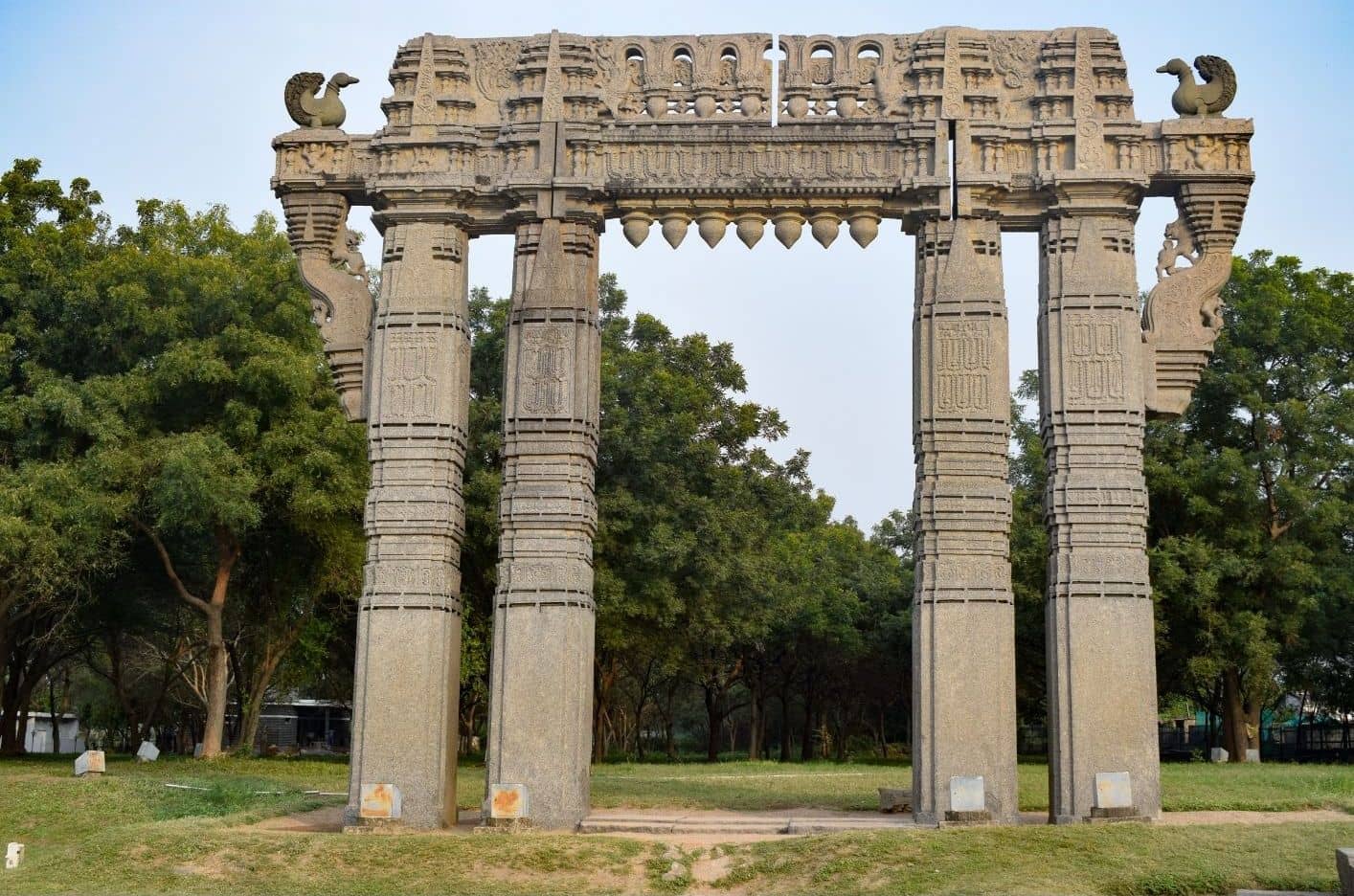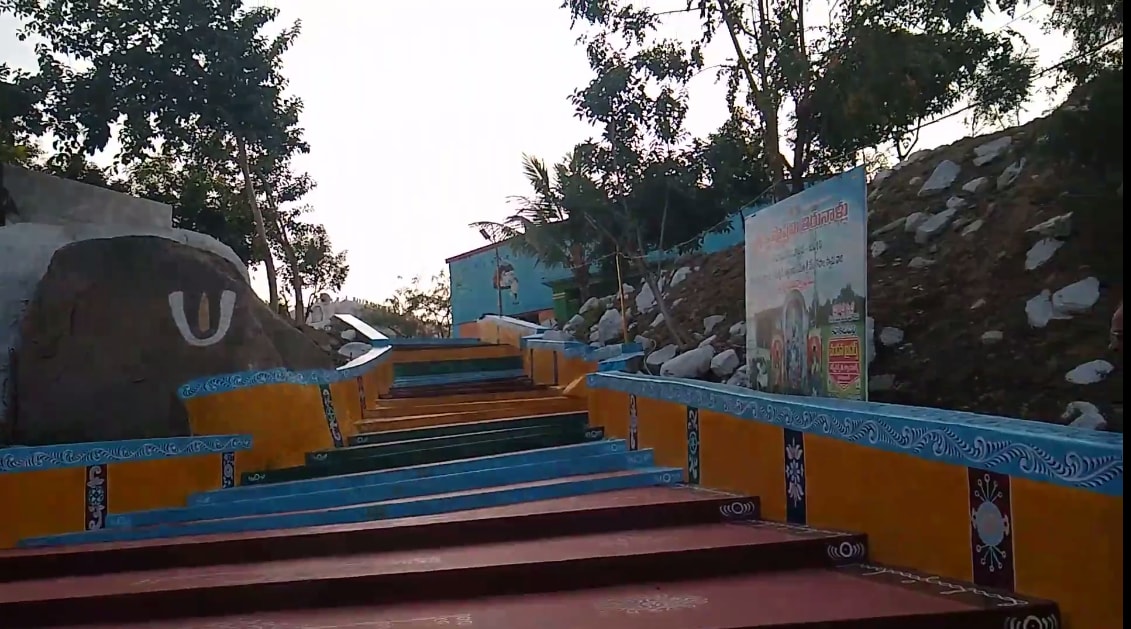This article talks about the top 7 facts about the Historic Site of Srisailam You Should Know
- Combination of Jyotirlinga and Shakti Peetha
- Self-Manifested Lingam
- Underground Pathway to Patala Ganga
- Trilinga Desa Pilgrimage
- Akka Mahadevi Caves
- Ancient Inscriptions
- Wildlife Sanctuary
Srisailam Temple, also known as Sri Bhramaramba Mallikarjuna Temple, is a renowned Hindu pilgrimage site located in the town of Srisailam in the Kurnool district of Andhra Pradesh, India.
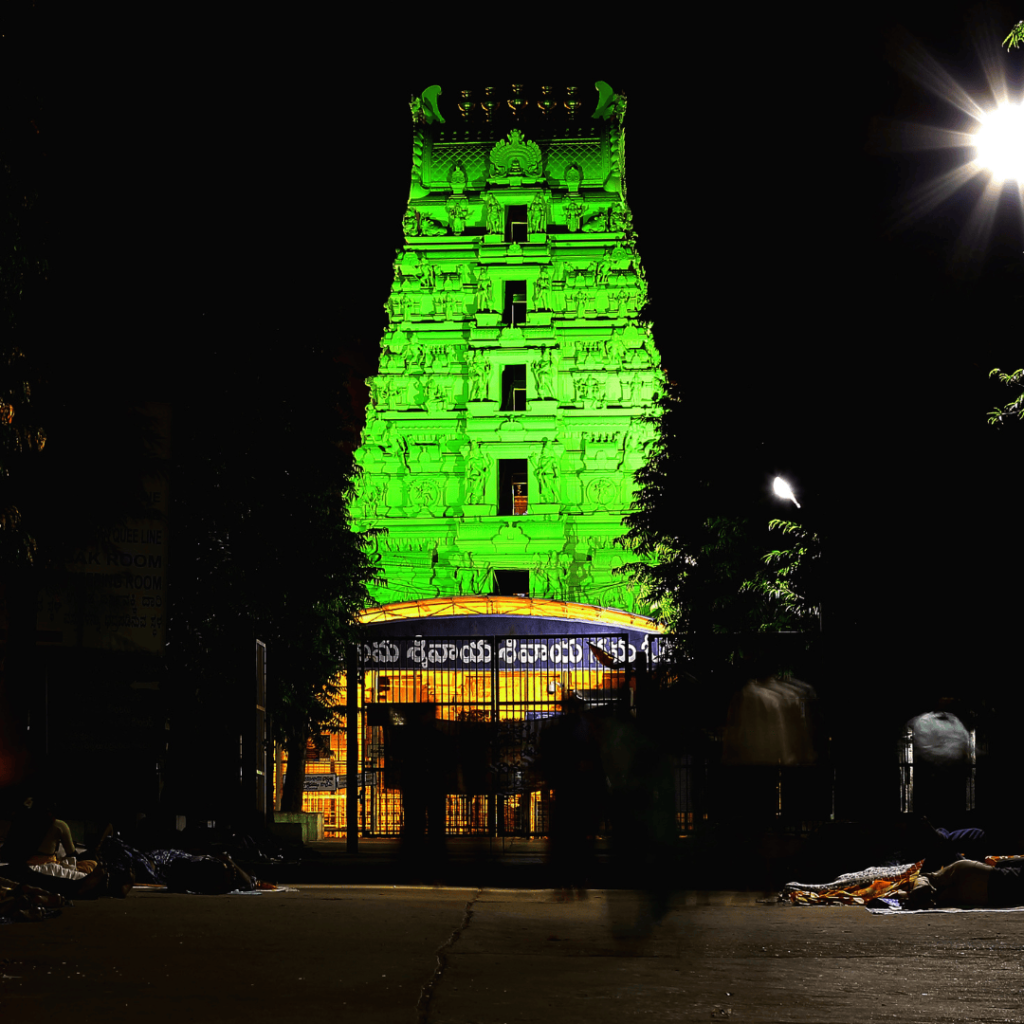
Combination of Jyotirlinga and Shakti Peetha
Srisailam Temple is considered a combination of a Jyotirlinga and a Shakti Peetha due to its dual significance as a revered place of worship for both Lord Shiva and Goddess Bhramaramba (an incarnation of Goddess Parvati).
Jyotirlinga:
Srisailam Temple is one of the 12 Jyotirlinga temples in India dedicated to Lord Shiva. According to Hindu mythology, a Jyotirlinga is a divine manifestation of Lord Shiva, and it represents the formless and eternal aspect of Lord Shiva as the supreme creator, preserver, and destroyer of the universe. Srisailam Jyotirlinga is believed to be self-manifested and is considered highly sacred by devotees of Lord Shiva.
Shakti Peetha:
Srisailam Temple is also one of the 18 Shakti Peethas, which are considered sacred places where the divine feminine energy or Shakti is worshipped in the form of various forms of Goddess Parvati. The Shakti Peethas are believed to be the places where the body parts of Sati, the first wife of Lord Shiva, fell after her self-immolation in grief over an insult to her husband. The Shakti Peetha associated with Srisailam Temple is called “Bhramaramba Shakti Peetha”, and it is believed that the neck part of Sati fell here, making it a sacred place for the worship of Goddess Bhramaramba.
The combination of Jyotirlinga and Shakti Peetha at Srisailam Temple represents the union of the masculine and feminine energies in Hindu mythology, symbolizing the harmonious balance and interdependence of Shiva and Shakti, the cosmic principles of creation and destruction. The temple is considered a sacred site where both Lord Shiva and Goddess Parvati are worshipped with equal reverence, making it a unique pilgrimage destination for devotees seeking blessings from both the divine masculine and feminine energies.
Self-Manifested Lingam
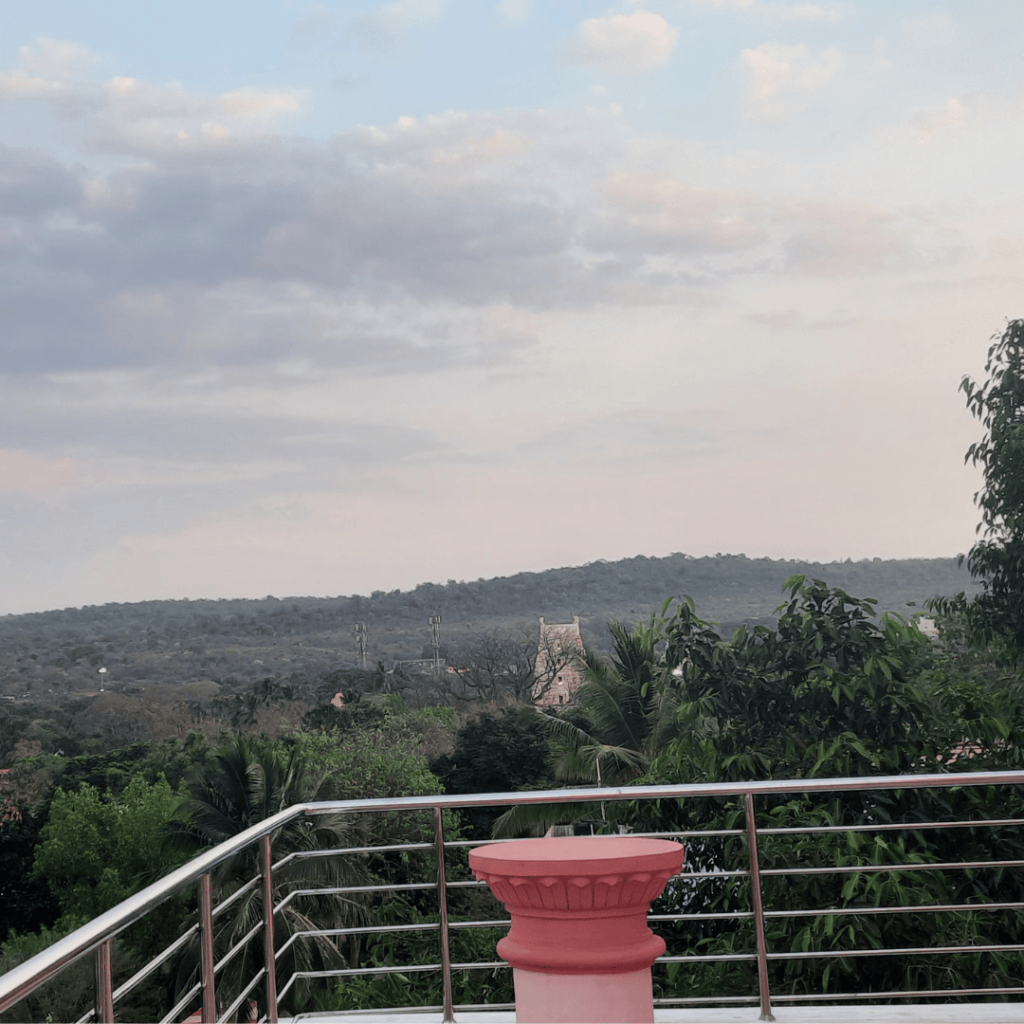
The Lingam at Srisailam Temple is considered self-manifested, which means it is believed to have appeared on its own without being sculpted or carved by any human being. According to Hindu mythology and legend, the self-manifestation of the Lingam at Srisailam Temple is associated with a story from ancient times.
As per the legend, a cowherd named Bilva found the Lingam at the present location of Srisailam on a rocky hill known as Srisaila Mallikarjuna, which is considered the abode of Lord Shiva. It is said that the Lingam was found in a natural crevice on the hill, and Bilva, who was a devoted worshipper of Lord Shiva, started worshipping the Lingam with great devotion. Over time, the news of the miraculous appearance of the Lingam spread, and a shrine was built around it to protect and preserve it.
It is believed that the Lingam at Srisailam Temple is not man-made, but a divine manifestation of Lord Mallikarjuna, the presiding deity of the temple. The Lingam is considered to be an embodiment of the divine presence of Lord Shiva, and it is revered as a powerful and sacred symbol of the Hindu faith. The self-manifestation of the Lingam adds to the unique and miraculous aspect of Srisailam Temple and makes it a significant place of worship for devotees of Lord Shiva.
Underground Pathway to Patala Ganga
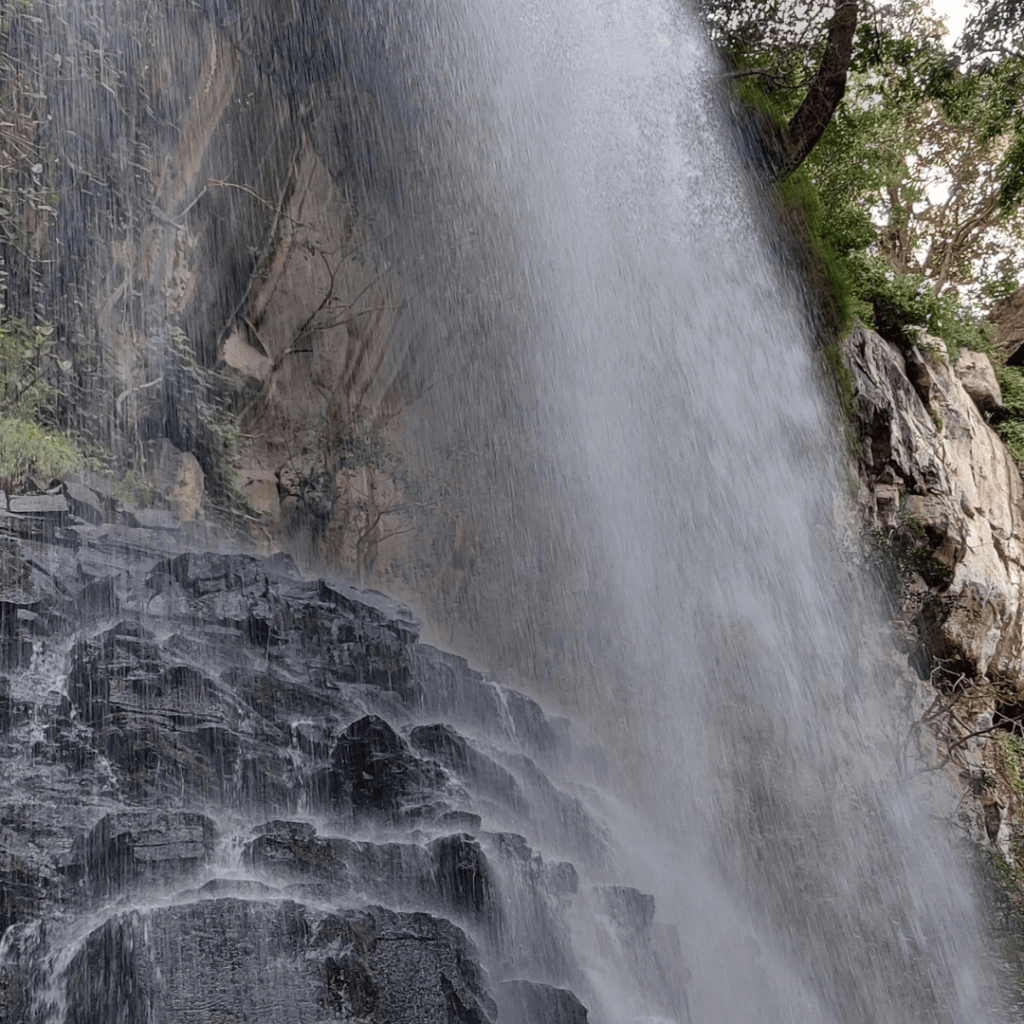
Patala Ganga is a sacred river located at the bottom of the Srisailam hill in Andhra Pradesh, India, and is considered a significant pilgrimage spot for devotees of Lord Shiva and Goddess Bhramaramba. Here are some truths about Patala Ganga in Srisailam:
- Sacredness
- Mythological Beliefs
- Scenic Beauty
- Rituals and Worship
- Conservation Efforts
- Cultural Importance
- Sacredness: Patala Ganga is considered a sacred river by Hindu devotees, and taking a bath in its holy waters is believed to be purifying and auspicious. It is believed that the river is associated with Lord Shiva and Goddess Parvati, and it holds religious significance for pilgrims visiting the Srisailam Temple.
- Mythological Beliefs: According to Hindu mythology, it is believed that Lord Shiva and Goddess Parvati used to come to Patala Ganga for a ritual bath after their divine marriage ceremony. It is said that the river was created by Lord Shiva for the pleasure of his consort, Goddess Parvati, and it is considered a divine gift to humanity.
- Scenic Beauty: Patala Ganga is known for its scenic beauty, with lush green surroundings and serene water flowing through the rocky terrain. The river is surrounded by dense forests, which add to its natural beauty, making it a picturesque and serene location for spiritual seekers and nature lovers alike.
- Rituals and Worship: Devotees visiting Srisailam Temple often perform rituals and offer prayers at Patala Ganga as part of their pilgrimage. It is common for pilgrims to take a dip in the river and offer prayers to Lord Shiva and Goddess Bhramaramba for blessings and well-being. The river is also believed to have healing properties, and some people come to Patala Ganga to take a holy bath for curing ailments or seeking spiritual solace.
- Conservation Efforts: There have been conservation efforts by the government and local authorities to protect and preserve the natural environment of Patala Ganga. Measures have been taken to prevent pollution and ensure the cleanliness of the river, including regular cleaning drives, waste disposal management, and awareness campaigns to promote responsible tourism and pilgrimage practices.
- Access: Patala Ganga can be reached by descending the steps from the Srisailam Temple complex or by taking a ropeway ride that offers panoramic views of the river and the surrounding landscape. The river is located at the bottom of the hill, and pilgrims need to trek down a flight of stairs to reach the riverbank.
- Cultural Importance: Patala Ganga is not just a place of religious significance but also holds cultural importance. It is believed to be associated with ancient Hindu traditions and customs, and its historical and mythological significance adds to its cultural value.
It’s important to respect the sanctity and natural environment of Patala Ganga and follow the rules and regulations laid down by the temple authorities and local authorities while visiting the river.
Trilinga Desa Pilgrimage
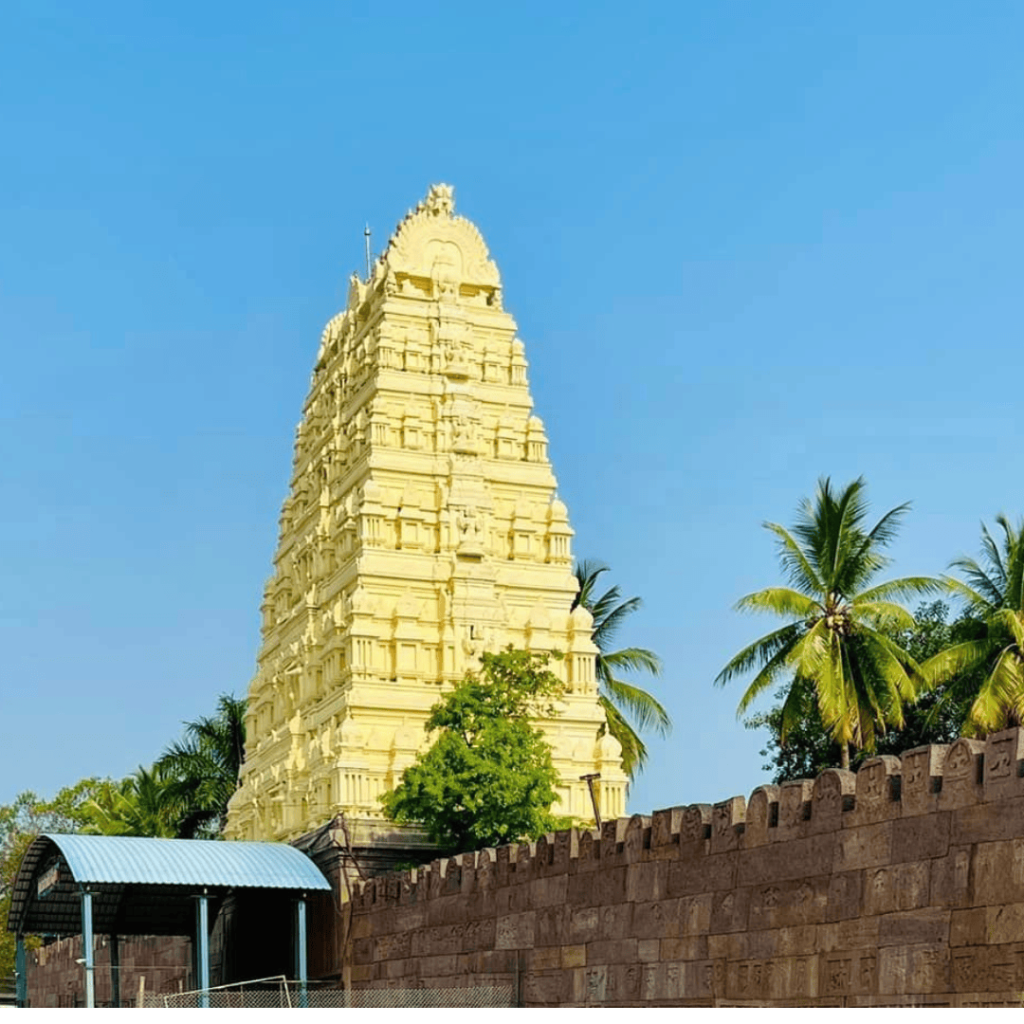
Trilinga Desa Pilgrimage is a sacred pilgrimage in the Srisailam region of Andhra Pradesh, India, which is known for its spiritual significance and is associated with the worship of Lord Shiva. The pilgrimage involves visiting three important Shiva temples located in three different regions, collectively known as Trilinga Desa, which translates to “Land of Three Lingas”. The three temples are:
- Srisailam Mallikarjuna Swamy Temple
- Bhimeswara Swamy Temple- located in the town of Draksharamam
- Someswara Swamy Temple-located in the town of Somasila
Srisailam Mallikarjuna Swamy Temple:
This is the main temple of the pilgrimage and is dedicated to Lord Mallikarjuna Swamy, an incarnation of Lord Shiva. It is located on the Srisailam hill, which is considered one of the 12 Jyotirlingas in India. The temple is known for its ancient architecture, rich history, and spiritual significance. It attracts millions of devotees from all over India who come to seek blessings and perform various rituals and offerings.
Bhimeswara Swamy Temple:
This temple is located in the town of Draksharama in Andhra Pradesh, which is about 160 kilometers from Srisailam. It is dedicated to Lord Bhimeswara Swamy, another form of Lord Shiva, and is known for its intricate architecture and historical importance. The temple is associated with several mythological legends and is believed to be one of the five powerful Shiva temples in the region.
Someswara Swamy Temple:
This temple is located in the town of Somasila, which is about 240 kilometers from Srisailam. It is dedicated to Lord Someswara Swamy, yet another form of Lord Shiva, and is known for its scenic beauty and spiritual significance. The temple is situated on the banks of River Penna and is believed to be one of the Pancharama Kshetras, a group of five important Shiva temples in Andhra Pradesh.
The Trilinga Desa Pilgrimage is considered highly auspicious and is believed to bestow devotees with blessings, divine grace, and spiritual upliftment. Many devotees undertake this pilgrimage as a form of spiritual journey and seek the blessings of Lord Shiva at these three revered temples. It is a significant pilgrimage for devotees of Lord Shiva and is often undertaken as a part of their religious and spiritual practices.
Akka Mahadevi Caves
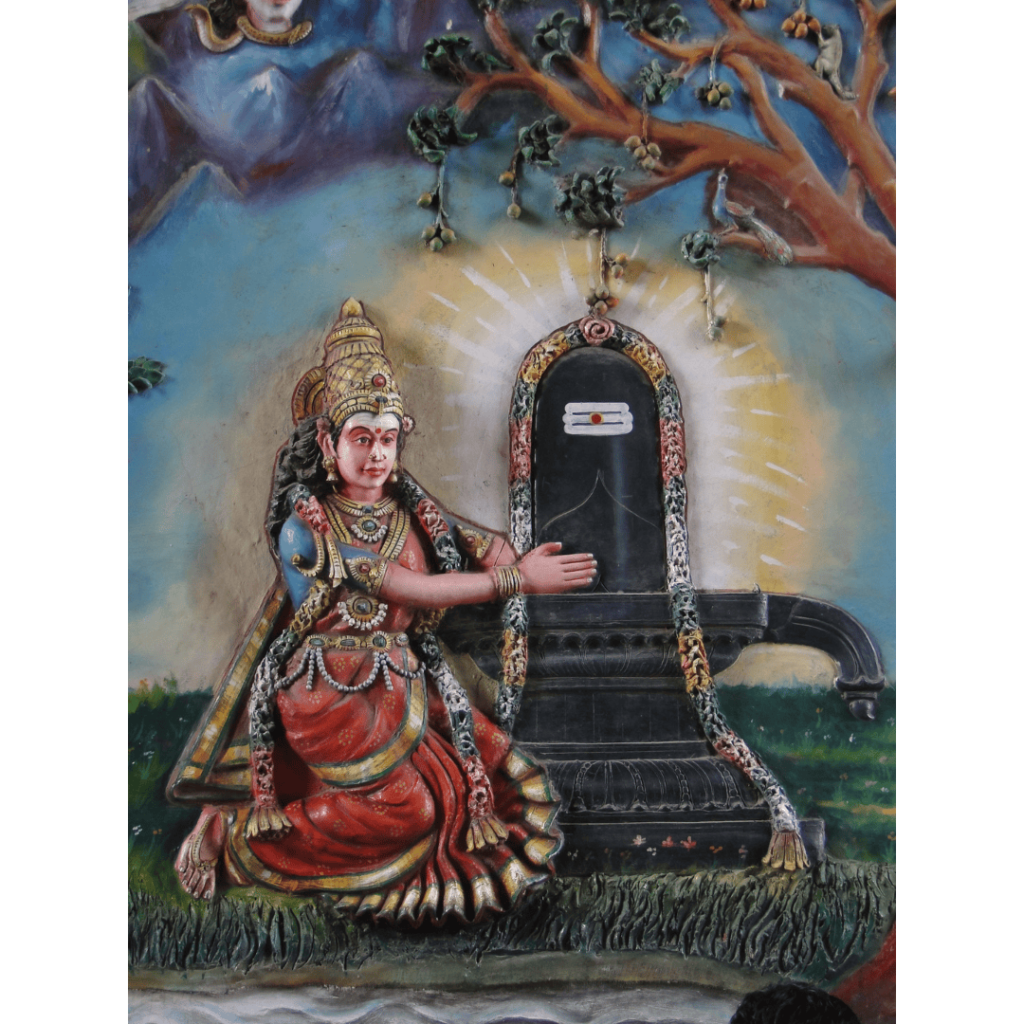
The Akka Mahadevi Caves are located in the Srisailam region of Andhra Pradesh, India, and are associated with the famous Kannada poet and saint, Akka Mahadevi. Akka Mahadevi was a 12th-century mystic and poetess who was known for her profound devotion to Lord Shiva and her spiritual teachings. The caves are believed to be the place where Akka Mahadevi practised intense meditation and penance.
The Akka Mahadevi Caves are situated on the banks of the Krishna River, near the Patala Ganga in Srisailam. These caves are carved out of the rocky cliffs and are considered as sacred site for devotees of Akka Mahadevi. The caves are simple and austere, reflecting the ascetic lifestyle of Akka Mahadevi. It is believed that she spent several years meditating and composing her famous poems in these caves.
The Akka Mahadevi Caves are visited by devotees and tourists who come to seek the blessings of Akka Mahadevi and pay homage to her spiritual legacy. The caves are considered a place of spiritual energy and tranquility, where visitors can experience a sense of serenity and connect with the divine. Many devotees also perform rituals and offer prayers at the caves as a mark of reverence to Akka Mahadevi’s spiritual teachings and her exemplary devotion to Lord Shiva.
Visiting the Akka Mahadevi Caves can be a spiritually enriching experience, as it allows devotees and visitors to connect with the profound spiritual legacy of Akka Mahadevi and soak in the serene ambiance of the caves. It is a place of pilgrimage for followers of Akka Mahadevi’s teachings and is often included in the itinerary of those visiting Srisailam for its spiritual significance.
Ancient Inscriptions
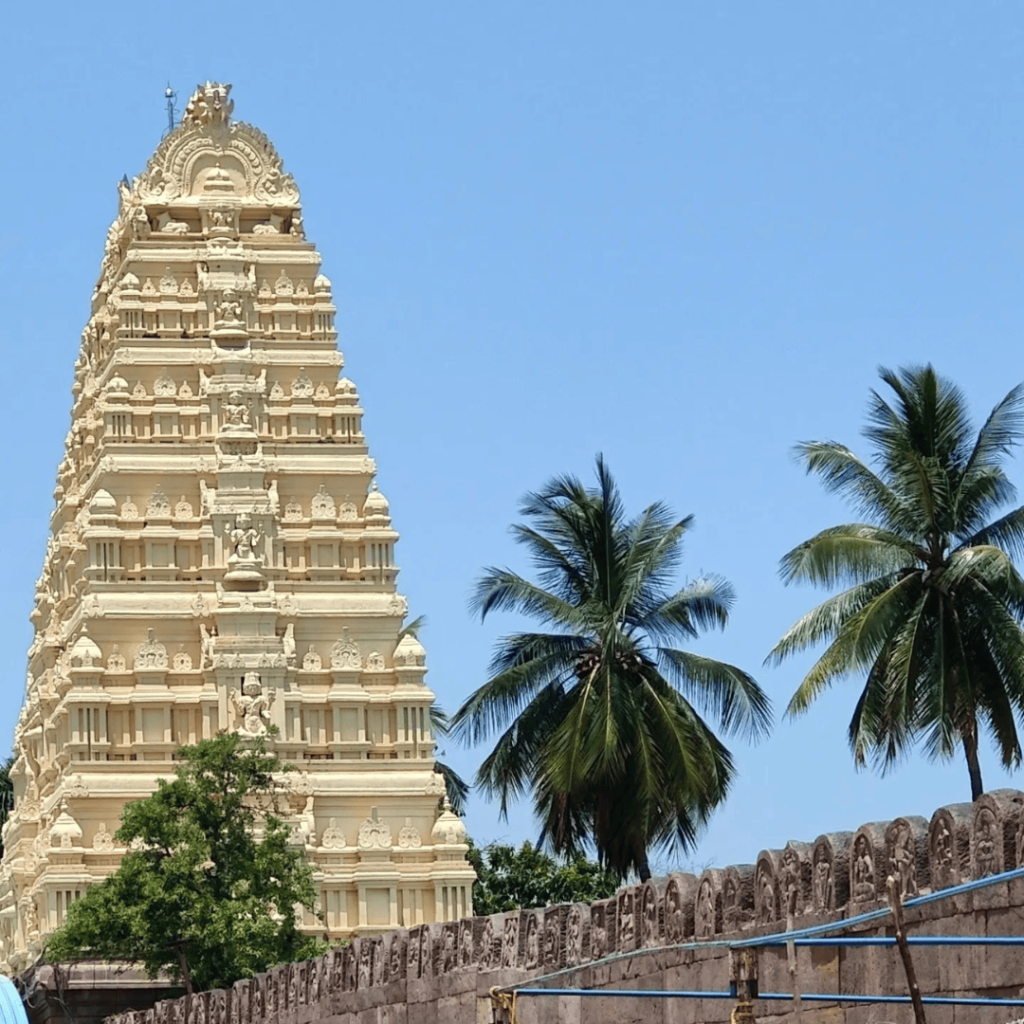
Srisailam, a region in Andhra Pradesh, India, is known for its ancient inscriptions that provide valuable historical and cultural information about the area. These inscriptions are typically found on stone pillars, walls, and other structures, and they date back to different periods of history, ranging from the ancient to medieval times. Here are some key points about the ancient inscriptions of Srisailam:
- Historical Information
- Religious Significance
- Epigraphical Value
- Cultural Heritage
- Preservation and Study
Historical Information:
The ancient inscriptions of Srisailam provide valuable historical information about the region, including details about the rulers, their genealogy, the administration, and the social and economic conditions of the time. They shed light on the political, social, and cultural aspects of Srisailam during different periods of history.
Religious Significance:
Many of the inscriptions in Srisailam are related to religious practices, beliefs, and donations made to temples and other religious institutions. These inscriptions mention the construction and renovation of temples, grants made to priests and religious scholars, and the performance of rituals and ceremonies. They provide insights into the religious practices, customs, and traditions followed by the people of Srisailam in the past.
Epigraphical Value:
The ancient inscriptions of Srisailam are of great epigraphical value, as they are written in different scripts and languages, such as Sanskrit, Telugu, and Kannada. They provide valuable evidence for the study of ancient scripts, languages, and their evolution over time. Epigraphists and historians often refer to these inscriptions for deciphering ancient scripts, understanding the linguistic variations, and interpreting the meaning of inscriptions in the context of the historical period.
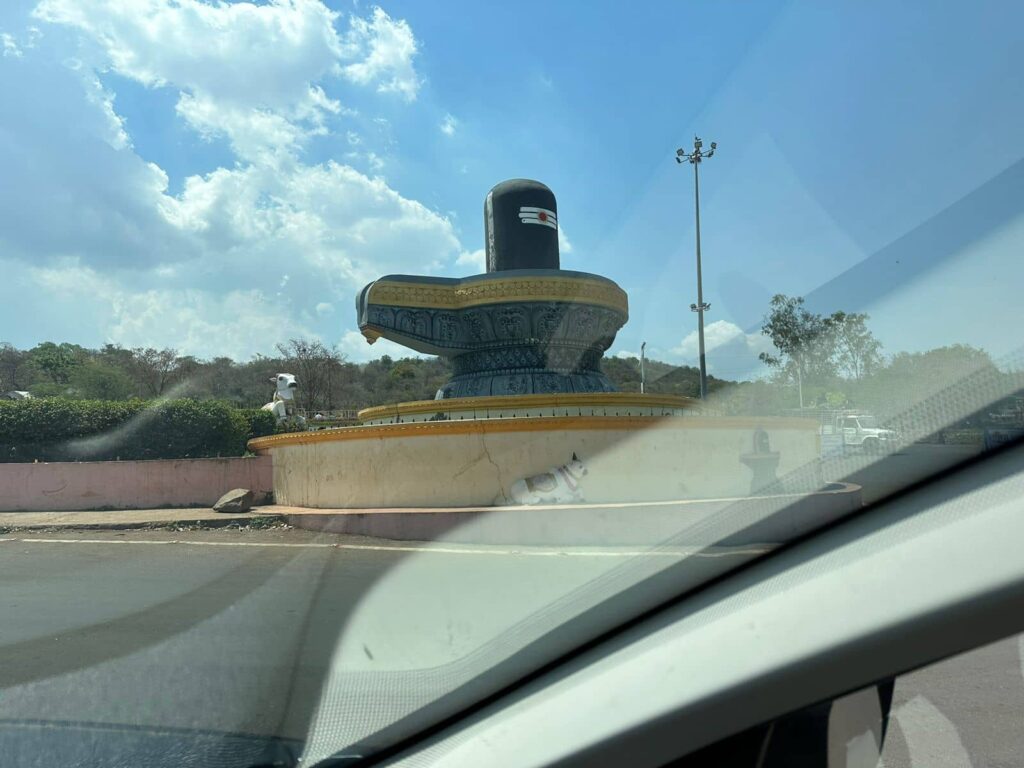
Cultural Heritage:
The ancient inscriptions of Srisailam also hold immense cultural significance, as they provide evidence of the art, architecture, and cultural practices of the past. These inscriptions often mention the construction and renovation of temples, palaces, and other structures, providing insights into the architectural styles, techniques, and materials used during different periods. They also mention the names of craftsmen, artisans, and donors, shedding light on the socio-economic conditions and cultural patronage of the time.
Preservation and Study:
The ancient inscriptions of Srisailam are protected and preserved by the Archaeological Survey of India (ASI) and other relevant authorities. They are studied by epigraphists, historians, and researchers to decipher their content, understand the historical and cultural context, and reconstruct the past. The inscriptions are valuable primary sources for reconstructing the history, culture, and socio-economic aspects of Srisailam and the surrounding region.
In conclusion, the ancient inscriptions of Srisailam are a valuable source of historical, cultural, and epigraphical information, providing insights into the rich heritage and significance of the region. They offer a window into the past, helping us understand the historical, social, religious, and cultural aspects of Srisailam and its surrounding areas.
Wildlife Sanctuary
Srisailam is located in the Nallamala Hills, which is a dense forest region and is also home to the Srisailam Wildlife Sanctuary. The sanctuary is known for its rich biodiversity and is home to several endangered species like the Bengal tiger, Indian leopard, and Indian pangolin, making it a unique pilgrimage site where devotees can experience both spirituality and wildlife.
The Srisailam Wildlife Sanctuary is a protected area, and efforts are being made to conserve its biodiversity and natural habitats. The sanctuary is managed by the Andhra Pradesh Forest Department, and various measures are undertaken to protect the flora and fauna of the region, including anti-poaching measures, habitat restoration, and community-based conservation initiatives.
Srisailam Wildlife Sanctuary is a notable natural attraction in the region, offering a unique opportunity to experience the rich biodiversity and natural beauty of the Nallamala Hills. It is a haven for wildlife enthusiasts, nature lovers, and bird watchers, providing a chance to explore the wilderness and appreciate the natural heritage of Srisailam.
These are some of the rare facts associated with Srisailam Temple, which make it a unique and revered pilgrimage site for devotees of Lord Shiva and Goddess Bhramaramba. The temple's rich history, mythology, and cultural significance make it a fascinating destination for spiritual seekers and history enthusiasts alike.
Here’s some information about Srisailam Temple:
- Location
- Deities
- Legend and Significance
- Architecture:
- Festivals
- Pilgrimage and Tourism
- Facilities
There are many tourist places and ancient temples in and around Hyderabad. This Srisailam temple is around 200 km. approx 5 hours of travel.
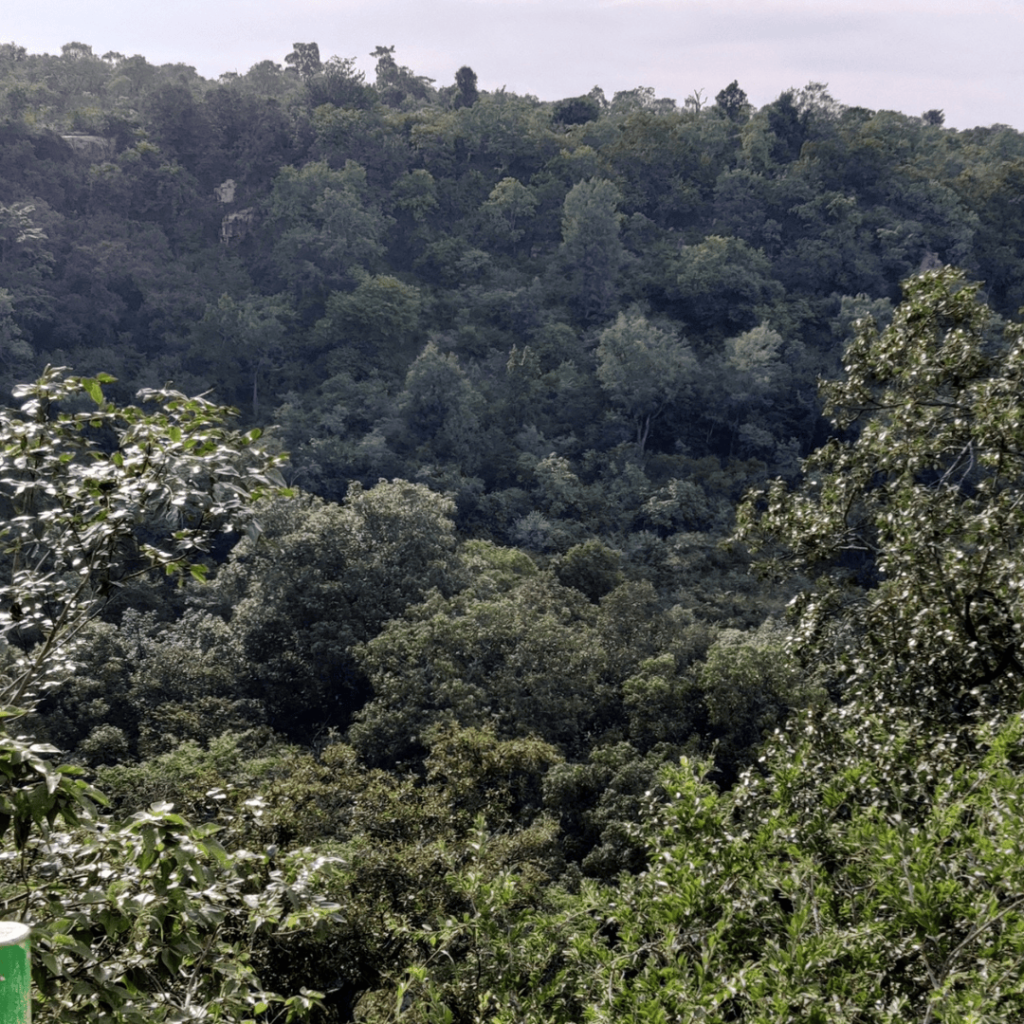
Location: Srisailam Temple is located on the banks of the Krishna River, in the Nallamala Hills of the Eastern Ghats in Andhra Pradesh. It is approximately 212 kilometers south of Hyderabad, the capital city of Telangana.
Deities: Srisailam Temple is dedicated to Lord Mallikarjuna (a form of Lord Shiva) and Goddess Bhramaramba (a form of Goddess Parvati). The presiding deity, Lord Mallikarjuna, is worshipped in the form of a Lingam, which is believed to be self-manifested.
Legend and Significance: According to Hindu mythology, Srisailam is considered to be the place where Lord Shiva appeared in the form of Mallikarjuna and Goddess Parvati appeared as Bhramaramba. It is believed that visiting Srisailam Temple and seeking the blessings of Mallikarjuna and Bhramaramba is considered highly auspicious and can bestow blessings of good health, prosperity, and spiritual upliftment.
Architecture: Srisailam Temple is known for its exquisite Dravidian style of architecture. The temple complex is spread over a vast area and has several halls, sanctums, and courtyards. The main sanctum of Lord Mallikarjuna has a massive gold-plated entrance called the Sripuram.
Festivals: Srisailam Temple celebrates several festivals with great pomp and devotion. Some of the important festivals celebrated at the temple are Mahashivaratri, Ugadi, Navaratri, and Karthika Masam. Mahashivaratri is the most significant festival of the temple, during which the temple is decorated with flowers, lights, and is visited by thousands of devotees who observe fasts, perform special prayers, and participate in various religious rituals.
Pilgrimage and Tourism: Srisailam is a major pilgrimage and tourist destination in Andhra Pradesh, attracting devotees and tourists from all over India. Apart from the temple, Srisailam also offers scenic views of the Krishna River, dense forests of the Nallamala Hills, and is also known for the Srisailam Dam, which is one of the largest dams in South India.
Facilities: Srisailam Temple provides various facilities for pilgrims, including accommodation options like cottages and guest houses, free food (annadanam) for devotees, and other amenities like cloakrooms, restrooms, and drinking water facilities.
Visiting Srisailam Temple can be a spiritually enriching experience for devotees and tourists alike, with its rich mythology, beautiful architecture, and serene surroundings. It is a significant pilgrimage site for Hindus and a popular tourist destination in Andhra Pradesh.
website : –https://www.srisailadevasthanam.org/
